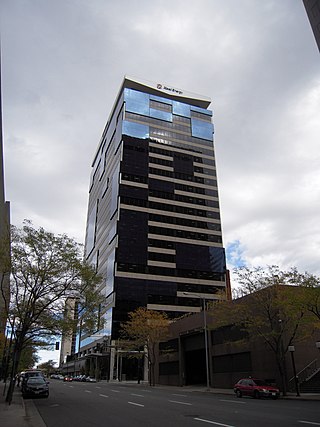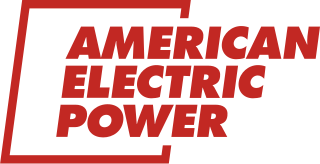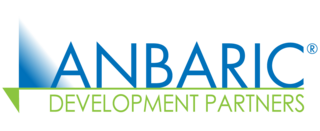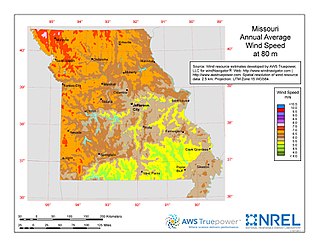Related Research Articles
Eversource Energy is a publicly traded, Fortune 500 energy company headquartered in Hartford, Connecticut, and Boston, Massachusetts, with several regulated subsidiaries offering retail electricity, natural gas service and water service to approximately 4 million customers in Connecticut, Massachusetts, and New Hampshire.

Xcel Energy Inc. is a U.S. regulated electric utility and natural gas delivery company based in Minneapolis, Minnesota, serving more than 3.7 million electric customers and 2.1 million natural gas customers across parts of eight states. It consists of four operating subsidiaries: Northern States Power-Minnesota, Northern States Power-Wisconsin, Public Service Company of Colorado, and Southwestern Public Service Co.

American Electric Power Company, Inc. (AEP), is a major investor-owned electric utility in the United States, delivering electricity to more than five million customers in 11 states.

A submarine power cable is a transmission cable for carrying electric power below the surface of the water. These are called "submarine" because they usually carry electric power beneath salt water but it is also possible to use submarine power cables beneath fresh water. Examples of the latter exist that connect the mainland with large islands in the St. Lawrence River.

Quad Cities Generating Station is a two-unit nuclear power plant located near Cordova, Illinois, United States, on the Mississippi River. The two General Electric boiling water reactors give the plant a total gross electric capacity of approximately 1,880 MW. It was named for the nearby cities of Moline, Illinois, Rock Island, Illinois, Davenport, Iowa, East Moline, Illinois, and Bettendorf, Iowa — known as the Quad Cities.
The electricity sector in Argentina constitutes the third largest power market in Latin America. It relies mostly on thermal generation and hydropower generation (36%). The prevailing natural gas-fired thermal generation is at risk due to the uncertainty about future gas supply.

Making up over 62% of the state's generated electricity in 2022, wind power is the largest source of electricity generation in Iowa. In 2020, over 34 billion kWh of electrical energy was generated by wind power. As of 2022, Iowa has over 12,200 megawatts (MW) of installed capacity with over 6,000 wind turbines, ranking 2nd and 3rd in the nation below Texas respectively.

ISO New England Inc. (ISO-NE) is an independent, non-profit Regional Transmission Organization (RTO), headquartered in Holyoke, Massachusetts, serving Connecticut, Maine, Massachusetts, New Hampshire, Rhode Island, and Vermont.

PJM Interconnection LLC (PJM) is a regional transmission organization (RTO) in the United States. It is part of the Eastern Interconnection grid operating an electric transmission system serving all or parts of Delaware, Illinois, Indiana, Kentucky, Maryland, Michigan, New Jersey, North Carolina, Ohio, Pennsylvania, Tennessee, Virginia, West Virginia, and the District of Columbia.

Wind power in Illinois provided nearly 10% of the state's generated electrical power in 2020 powering 1,231,900 homes. At the end of 2020, Illinois had 6,300 megawatts (MW) of wind power installed, ranking fifth among states for installed wind turbine capacity. An additional 1,100 MW of wind power was under construction across the state at the end of 2020.
The Highland Wind Energy Center is a 501.4 megawatt (MW) wind farm in O'Brien County, Iowa. It became the largest facility in the state when it was placed online in 2015.

The U.S. state of Massachusetts has vast wind energy resources offshore, as well as significant resources onshore. The 2016 update to the states's Clean Energy and Climate Plan had a goal of reducing 1990 baseline greenhouse gas emissions levels by 25% by 2020. Current goals include installing 3,500 megawatts (MW) of offshore wind power in the state by 2035. However, as of Q4 2021 the state had only 120 MW of wind powered electricity generating capacity, responsible for generating 0.9% of in-state electricity production. The state has awarded contracts to two offshore projects, the 800 MW Vineyard Wind project and 804 MW Mayflower Wind project. Construction began on the Vineyard Wind 1 project on November 18, 2021, after a long fight for approval. Commonwealth Wind was selected for development in 2021, but the developer has attempted to cancel the project due to increased costs. There are eight projects planned for off the southern coast of Massachusetts, though some will deliver power to Rhode Island, Connecticut, and New York.
The Champlain Hudson Power Express (CHPE) is a planned high-voltage direct current (HVDC) underwater and underground power cable project linking the Quebec area to the New York City neighborhood of Astoria, Queens. Following completion of a review by the New York State Public Service Commission, construction began in 2022. The line is permitted and expected to be operational in 2026.

Anbaric Development Partners (Anbaric) is an American electric power transmission and storage development company located in Wakefield, Massachusetts. The company develops smart grid, renewable energy, and large-scale electric transmission projects which use high-voltage direct current (HVDC) technology for clients in the United States and internationally.
The Chokecherry and Sierra Madre Wind Energy Project is large-scale wind farm located near Rawlins, Wyoming, currently under construction. If completed as scheduled in 2026, it is expected to become the largest wind farm in the United States and one of the largest in the world. Located largely on federal lands, the project is being built in conjunction with the TransWest Express transmission line to supply power to the California market. Originally slated for completion in 2020, the goal was extended to 2026 in 2019 amid permitting, environmental, and construction delays.

Wind power in Tennessee has most potential in East Tennessee along the North Carolina border. The state has not passed renewable portfolio standard legislation and there is just one utility-scale wind farm with 15 operating turbines and previously 3 test turbines. The Tennessee Valley Authority (TVA), based in Knoxville, imports wind-generated electricity into its service area which includes Tennessee. US Senator Lamar Alexander from Tennessee is an outspoken critic of wind power.

Wind power in Kentucky has limited potential for development within the state since there are generally low wind speeds, though there are specific locations where it can be effective. The state has not passed renewable portfolio standard legislation and there are no commercial-scale wind turbines. Kentucky may benefit from the development of wind power in Tennessee, an adjoining state with which it is collaborating, and from efforts by the Tennessee Valley Authority to both develop and import wind-generated electricity into the region.

Wind power in Missouri has an installed capacity of 959 MW from 499 turbines, as of 2016. This provided 1.29% of the state's electricity production.
South Fork Wind Farm is a utility-scale offshore wind farm project on the Outer Continental Shelf Offshore Rhode Island (RI) which will provide energy to New York state.
References
- ↑ "Deal with Downstate cable plant to bring 1,450 jobs". Chicago Sun-Times. Associated Press. 2012-03-06. Archived from the original on 2012-08-26. Retrieved 2016-01-29.
- ↑ "Maps & Location". Rock Island Clean Line. Retrieved 2016-01-29.
- 1 2 Haugen, Dan (2011-12-05). "New transmission line would ease Iowa wind bottleneck". Midwest Energy News. Retrieved 2016-01-29.
- ↑ Carlson, J. Lon; Loomis, David G.; Solow, John L. (2011-03-16). Economic Impact Study of the Proposed Rock Island Clean Line (PDF) (Report). Loomis Consulting. Retrieved 2016-01-29.
- ↑ "Regulatory Approvals". Rock Island Clean Line. Retrieved 2016-01-29.
- ↑ "About RICL". Block RICL. Retrieved 2016-01-29.